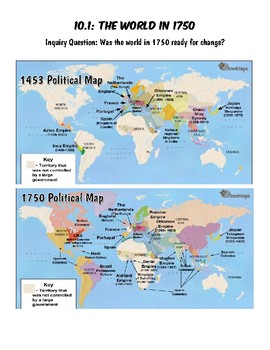Schwan, Leanne
Page Navigation
- Home
-
Global 10
- 10.1 The World in 1750 C.E.
- 10.2 Enlightenment, Revolution, and Nationalism
- 10.3 Causes and Effects of the Industrial Revolution
- 10.4 Imperialism
- 10.5 Unresolved Global Conflict (1914-1945)
- 10.6 Unresolved Global Conflict (1945-1991)
- 10.7 Decolonization and Nationalism
- 10.8 Tensions Between Cultural Traditions and Modernization
- 10.9 Tensions Between Cultural Traditions and Modernization
- 10.10 Human Rights Violations
- 9.1/10.0 Historical Thinking
-
Global 9
- 9.1/10.0 Historical Thinking
- 9.2 - The First Civilizations
- 9.3 Classical Civilizations
- 9.4 Political Powers and Achievements
- 9.5 Social and Cultural Growth and Conflict
- 9.6: Ottoman and Ming Pre-1600
- 9.7: Transformation of Western Europe and Russia
- 9.8: Africa and the Americas Pre-1600
- 9.9: Interactions and Disruptions
- Global Resources
- Global Review
- HMH TEXTBOOK PDF
- SUB PLANS
- CL Foundations in Education - IONA
10.1 -The World in 1750 C.E.

10.01 PPT Presentations
-

10.01 Cause and Effect Chain
2023 10.01 The World in 1750 - Cause and EFfect Chain.pptx 2.42 MB (Last Modified on February 1, 2023)
-
ESSENTIAL QUESTION:
How do empires consolidate their power?
How do these empires respond to increased diversity and interconnectedness?
-
The world in 1750 was marked by powerful Eurasian states and empires, coastal African kingdoms, and growing European maritime empires. The interactions of these states, empires, and kingdoms disrupted regional trade networks and influenced the development of new global trade networks.
(Standards: 2, 3, 5; Themes: ID, GEO, GOV, EXCH)

Chapter Review
Videos
-

Crash Course - The Ottoman Empire
Venice and the Ottoman Empire Crash Course World History 19.mp4 160.21 MB (Last Modified on March 3, 2020)







